The most common disease in the United States is not what you may think. Heart disease, stroke, or cancer come to mind, but actually gum disease is the single most prevalent disease in America. In fact, it affects more people than heart disease, stroke, Alzheimer's, and cancer combined. About 80% of the population has some form of gum disease, also known as periodontal disease, periodontitis (advanced), and gingivitis (mild).
What is Gum Disease?
Gum disease is an infection of the gums and bone that support teeth, and it usually starts early in life, then progresses as a person ages. It all starts when plaque hardens into tartar (also called calculus) below the gum line. This irritates vulnerable soft tissues and infection can set in. Combined with decaying food particles lodged between teeth and bacteria emitted by plaque, the infection can spread quickly. Symptoms are so mild in the early phase, many patients don't recognize them: red, tender, swollen gums, bleeding when brushing teeth.
As the condition progresses, gums recede from teeth and pockets of bacteria form. The bacteria can destroy gum tissue and bone, causing tooth and bone loss.
Why is Gum Disease so Serious?
Recent research reveals that gum disease is linked to increased risk for major overall health problems, including but not limited to stroke, heart disease, respiratory problems, osteoporosis, diabetes complications, low birth weight, and most recently, dementia. Because of these findings, research continues. We may learn much more in the next few years.
It makes perfect sense, though – gum disease linked to overall health problems. Everything that enters or is present in the mouth has access to the whole body. The mouth is like a portal to the body. That's why regular checkups and hygiene visits are vital to not only oral health, but also overall health.
Is Gum Disease Curable?
Unfortunately, gum disease is not curable. However, we can detect early warning signs of gum disease at your regular dental checkups. At this stage, prevention might be as simple as changing your brushing technique, improving your flossing routine, or changing the products you use for oral care at home.
Once gum disease sets in, we can often treat it with non-surgical therapy including:
- Scaling – to remove hardened plaque from below the gum line
- Root Planing – to reduce rough areas on teeth roots
- Antibiotic Therapy – to battle infection
- Laser Treatment – to remove bacteria and promote gum reattachment
- Surgery – advanced cases may require the care of a periodontist, in which case we will refer you to a trusted colleague
Expect to attend more frequent hygiene visits so that a dentist or hygienist can monitor your condition and make sure that recovery is on track.
What is Laser Treatment for Gum Disease?
Combined with comprehensive periodontal therapy, a diode laser for soft tissue procedures can remove and reduce some periodontal infection. This type of treatment also promotes reattachment of gum tissue to teeth. Laser dentistry is precise and conservative in comparison to traditional therapies. Some patients do not even need anesthesia during laser therapy.





